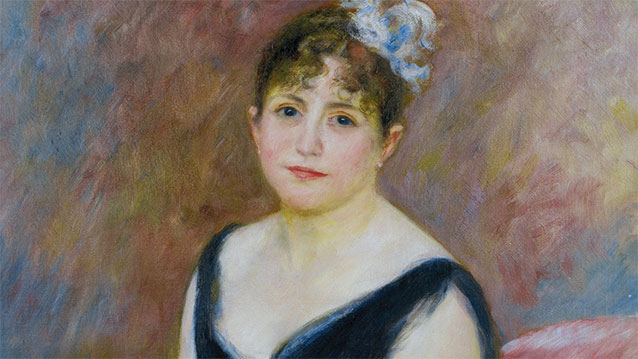EVANSTON, Ill. --- Scientists are using powerful analytical and imaging tools to study artworks from all ages, delving deep below the surface to reveal the process and materials used by some of the world’s greatest artists.
Northwestern University chemist Richard P. Van Duyne, in collaboration with conservation scientists at the Art Institute of Chicago, has been using a scientific method he discovered nearly four decades ago to investigate masterpieces by Pierre-Auguste Renoir, Winslow Homer and Mary Cassatt.
Van Duyne recently identified the chemical components of paint, now partially faded, used by Renoir in his oil painting “Madame Léon Clapisson.” Van Duyne discovered the artist used carmine lake, a brilliant but light-sensitive red pigment, on this colorful canvas. The scientific investigation is the cornerstone of a new exhibition at the Art Institute of Chicago.
Van Duyne discussed his research on Renoir’s painting as well as his studies of Winslow Homer’s watercolor “For to be a Farmer’s Boy” and Mary Cassatt’s pastel “Sketch of Margaret Sloane, Looking Right” at a Feb. 13 press briefing at the American Association for the Advancement of Science (AAAS) annual meeting in Chicago.
He also spoke about “Detecting Organic Dyestuffs in Art with Surface-Enhanced Raman Spectroscopy” at the AAAS meeting as part of the Feb. 14 symposium “Preserving Our Cultural Heritage: Science in the Service of Art.”
To see what the naked eye cannot see, Van Duyne used surface-enhanced Raman spectroscopy (SERS) to uncover details of Renoir’s paint. SERS, discovered by Van Duyne in 1977, is widely recognized as the most sensitive form of spectroscopy capable of identifying molecules.
He is the Charles E. and Emma H. Morrison Professor of Chemistry in Northwestern’s Weinberg College of Arts and Sciences.
Van Duyne and his colleagues’ detective work informed the production of a new digital visualization of the painting’s original colors by the Art Institute’s conservation department. The re-colorized reproduction and the original painting (presented in a case that offers 360-degree views) can be viewed side by side at the exhibition “Renoir’s True Colors: Science Solves a Mystery” through April 27 at the Art Institute.


